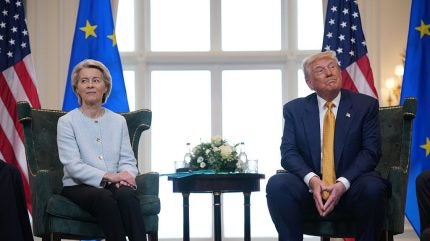
Martin G Kaspar is vice-president of corporate strategy and development at a German Mittelstand company.
We have all seen the headlines of corporate announcements of vast foreign direct investment (FDI) projects into the US. Add to this the $500bn (Y73.75trn) of projected FDI inflows from Japan and the €600bn from the EU following President Donald Trump’s tariff ‘negotiations’. At the same time, real FDI inflows into the US have visibly slowed since the start of Trump’s second term. According to US Bureau of Economic Analysis data, FDI dropped to $52.8bn in Q1 2025 (down from $79.9bn in Q4 2024), making it the weakest quarterly performance since 2022.

to look beyond attention-grabbing headlines. Credit: Martin G Kaspar.
So, why the disconnect between project announcements and real capital flows? What does this tell us about the attractiveness of the US as an investment destination? And what about our grasp of what is actually going on in the world of FDI?
There are a number of explanations as to why FDI projects into the US are being announced publicly with great fanfare, and are not (yet) materialising in reality.
Projects could be delayed, scaled down, or quietly abandoned altogether, as foreign companies watch Washington’s unpredictable trade and investment policy – alternating between tariffs, retaliatory measures and sudden exemptions. The latter point seemingly led to the double-strategy of grandiose announcements, while real project deployment is being stalled. Presumably to wait for more regulatory clarity and stability. A variant of this strategy is to “repackage” projects (earlier investment plans being rebranded as new investments to spin stories of reshoring or policy alignment).
That being said, it is not just corporate signalling on steroids (in other words, deliberately misleading) that causes these distortions. The mismatch can also have very practical reasons, such as in the case of the Italian tyre manufacturer Pirrelli, which had planned to invest $2bn in the US to expand its production footprint in Georgia. Due to 37% of the company being owned by Sinochem, a Chinese state-owned enterprise, red flags within US authorities went up and the whole project is now ‘on hold’.

US Tariffs are shifting - will you react or anticipate?
Don’t let policy changes catch you off guard. Stay proactive with real-time data and expert analysis.
By GlobalDataSimilarly, Nissan’s investment plans to manufacture a number of electric vehicle (EV) models at its plant in Canton, Mississippi, were shelved due to the elimination of EV tax credits by the US administration and the resulting slump in EV demand.
Basically, the US remains a highly attractive destination for FDI, with its 330 million consumers. However, the growing gap between project announcements and actual capital inflows reveals deep corporate concerns. Policy and regulatory volatility have made long-term investments more of a gamble than a genuine investment. It highlights that companies increasingly view the US as an unstable location, with it now more a stage for FDI theatre rather than a genuine destination for productive capital.
To regain trust, Washington must ensure more consistent trade and industrial policies, streamline approval processes, and prioritise transparent, outcome-based procedures over headline-grabbing pledges.
Current FDI metrics further distort our perception of reality, failing to distinguish between pledged, committed and realised investment.
This leads us to one of the key topics in the field: FDI data. Balance of payments (BoP)-based data always suffered from the tension between legal ownership and real economic activity by counting any change in cross‑border financial flows or reinvested earnings as FDI, regardless of whether capital actually flows into new productive assets or other purposes.
Similarly, “pass‑through” investments – where multinationals channel funds through low‑tax jurisdictions such as the Netherlands or Luxembourg – are used to optimise their tax position. Such measures can distort flows by up to 30 or 40% of recorded FDI flows.
Lastly, ’round‑tripping’, whereby domestic investors send money abroad and immediately bring it back as ‘foreign’ capital to collect FDI incentives, further inflates headline FDI figures.
To overcome these BoP weaknesses, analysts increasingly turned to alternative sources. Data aggregators started to track announced greenfield projects, offering project‑level granularity on industry, location and planned jobs that BoP-based figures never could. While these much richer data sets sidestepped the pure financial flow statistics and added layers of useful insights, these providers suffer especially from the current trend of inflated announcement vis-à-vis real flows. Increasingly, these measurement flaws are more than technical quirks and lead to misaligned decisions themselves.
Without clearer, tiered metrics that distinguish announced, committed and realised investments, policymakers and markets will continue to mistake press release optics for economic substance.
In that, we should be grateful to Donald Trump for shining a light on aspects of FDI that had been tricky all along.





